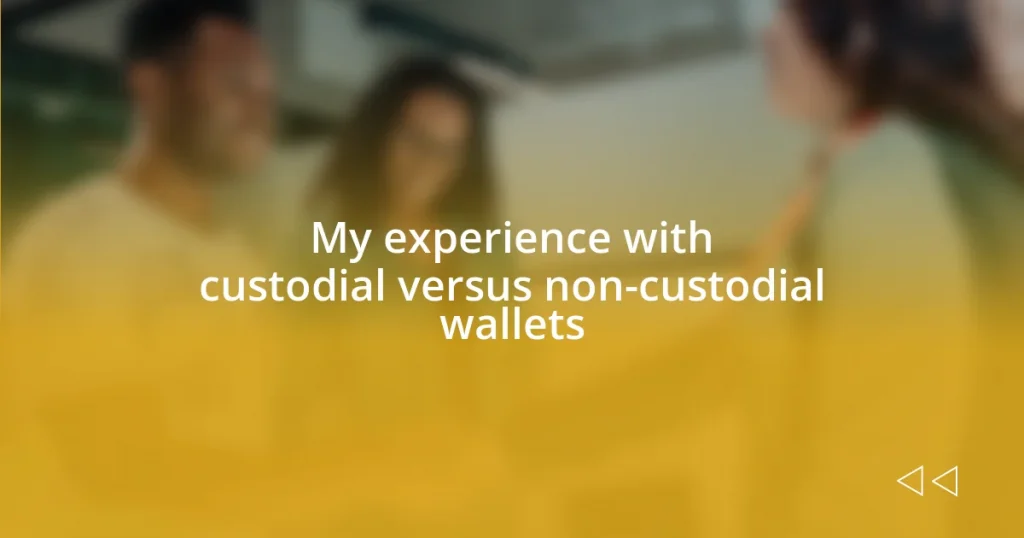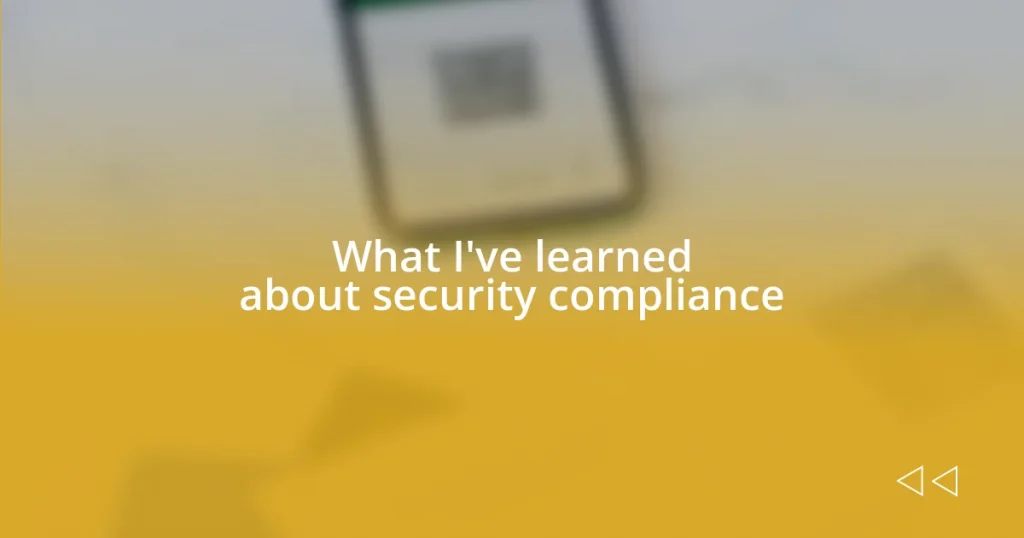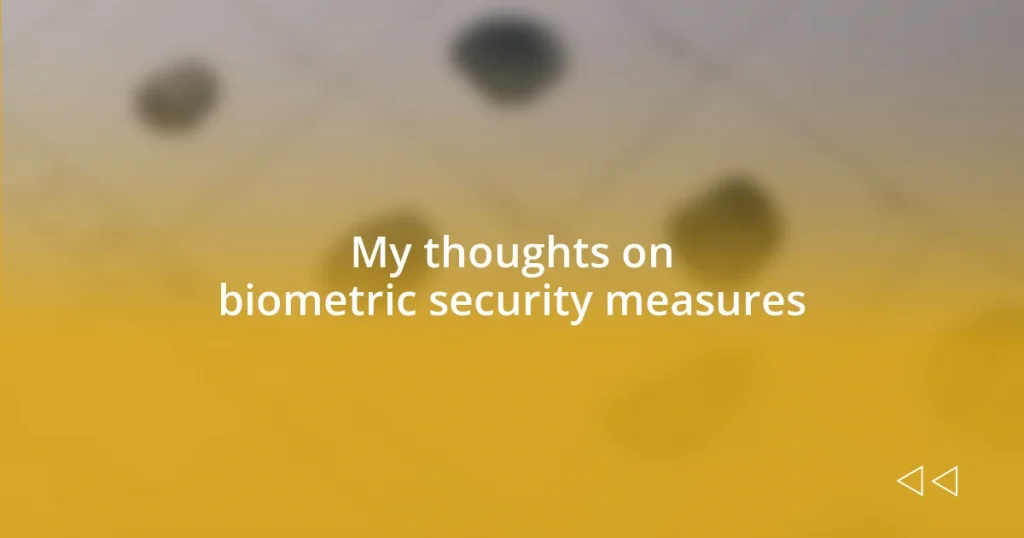Key takeaways:
- Understanding the distinction between custodial and non-custodial wallets is crucial, as each offers different levels of control and user responsibility.
- Custodial wallets provide convenience and security with recovery options, but trust is placed in a third-party provider; non-custodial wallets offer true ownership but come with greater personal responsibility for security.
- Non-custodial wallets empower users with privacy and a broader range of cryptocurrency support, enhancing personal financial freedom compared to custodial wallets.

Understanding wallet types
When diving into wallet types, understanding the difference between custodial and non-custodial wallets is crucial. Custodial wallets are typically hosted by a third party, like an exchange, which means they hold your private keys. I remember feeling a mix of convenience and vulnerability the first time I used one—after all, I was entrusting my funds to someone else. Does that concern you too?
On the other hand, non-custodial wallets allow you to maintain full control over your private keys. This autonomy can feel liberating, like being the captain of your financial ship, steering wherever you desire. I still get a thrill from knowing that no one can access my crypto but me. But let’s be honest, that responsibility can also be a bit daunting—what if I lose my keys?
Understanding wallet types is not just about technical differences; it’s also about how we feel when using them. Those feelings can range from empowerment with a non-custodial wallet to unease with custodial options. How do these emotions influence the choices we make in managing our digital assets? Reflecting on my own experiences, it’s clear that emotional and practical aspects work hand in hand.

What are custodial wallets
Custodial wallets are services that manage your crypto assets on your behalf, typically offering a user-friendly experience. With these wallets, the service provider holds your private keys, meaning they control access to your funds. Reflecting on my first encounter with a custodial wallet, I was relieved by the simplicity of using one to buy my first cryptocurrency, but that also meant surrendering a level of control over my assets that made me anxious.
- They are usually hosted on cryptocurrency exchanges.
- Users must trust the provider to securely manage their keys.
- They often come with added security features, like two-factor authentication.
- Recovery options may exist if you forget your credentials, unlike with non-custodial wallets.
- They can be easier to use for newcomers to the crypto space.

What are non-custodial wallets
Non-custodial wallets empower users by allowing them to control their private keys, which means that they are solely responsible for the security of their funds. I remember the first time I transitioned to a non-custodial wallet; it was invigorating to know that my cryptocurrencies were entirely in my hands. However, this sense of freedom also came with a new layer of anxiety—misplacing my recovery phrase was a lingering worry that made me extra cautious.
What truly sets non-custodial wallets apart is the user experience. While they may require more initial setup and understanding, the reward is a sense of ownership and independence that custodial wallets often lack. I vividly recall the sense of accomplishment when I successfully completed a transaction without relying on a third party. It felt like I had taken full command of my digital assets, navigating through the crypto waters with my own compass.
The design and functionality of non-custodial wallets can vary widely from one to another. Some prioritize user-friendliness, making it easy for beginners, while others cater to advanced users with more complex features. My current favorite allows me to interact with decentralized services seamlessly, and it’s fascinating to think about how these wallets can reflect personal preferences and comfort levels in the crypto realm.
| Feature | Non-Custodial Wallets |
|---|---|
| Control of Private Keys | User has full control |
| Security Responsibility | User is fully responsible |
| Ease of Use | Varies; can be complex |
| Recovery Options | Limited, based on self-management |
| Trust Factor | No third-party trust needed |

Key differences between wallets
The key differences between custodial and non-custodial wallets primarily revolve around the control and responsibility of the user. With custodial wallets, the service provider holds your private keys, which can feel secure but also leaves you lingering with questions about trust. I remember feeling a mix of relief and apprehension when I realized that my crypto was technically in someone else’s hands. It raises the question: how much do we trust these providers to safeguard our financial assets?
On the other hand, non-custodial wallets offer complete control over your private keys, placing the full security burden onto you. This independence was thrilling for me—I felt like a captain steering my own ship through uncharted waters. Yet, there’s a caveat: I often found myself double-checking my recovery phrase, worrying about what might happen if I lost it. Has anyone else felt that tension between freedom and caution?
Another significant difference lies in recovery options. Custodial wallets typically have straightforward processes to retrieve forgotten credentials, which can be a lifesaver in a panic. I experienced this firsthand—when I accidentally locked myself out of my account, the provider’s recovery system saved the day. Non-custodial wallets, however, often lack such safety nets, which can leave you wondering if the greater ownership experience outweighs the associated risks. It’s a fine line to walk, and the decision ultimately depends on what feels right for you.
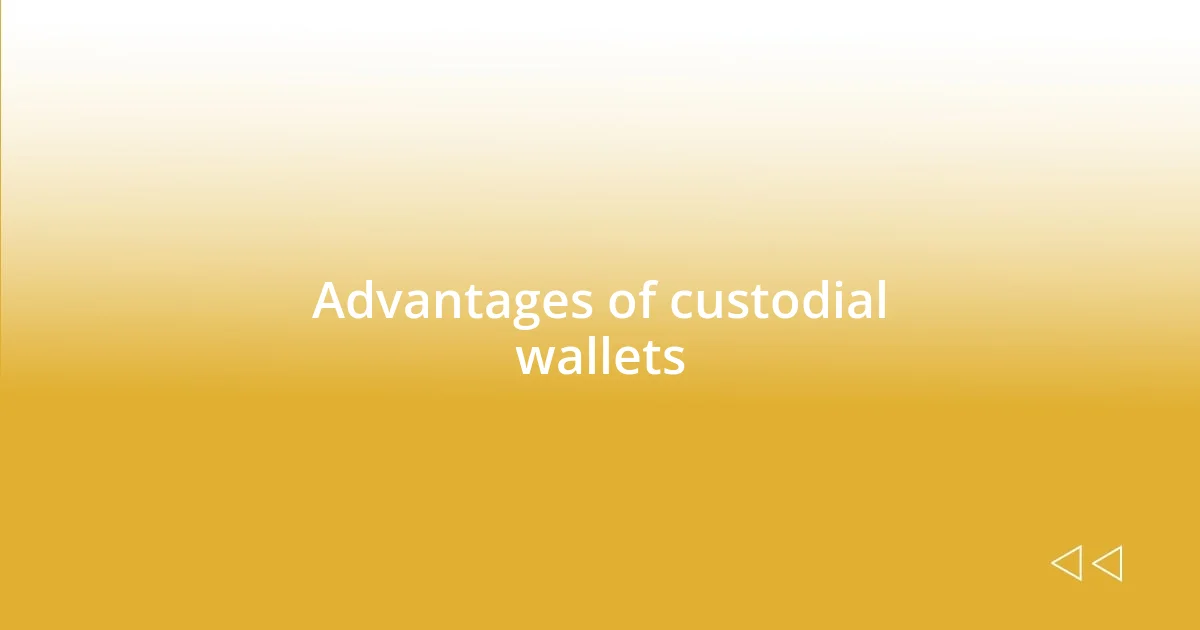
Advantages of custodial wallets
Custodial wallets offer a significant advantage in user convenience, especially for those new to the cryptocurrency space. I remember when I first dipped my toes into crypto; having a custodial wallet felt like having training wheels on a bike. The ease of logging in, making transactions, and even troubleshooting issues was a relief. It made the transition into the crypto world feel less daunting, as I knew there was a support system right behind me.
Security is another strong point in favor of custodial wallets. Although the concept of someone else holding my private keys initially made me uneasy, I found comfort in knowing that these providers invest heavily in security measures. I once faced a situation where my friend’s non-custodial wallet was hacked due to a missed update; it was a stark reminder of how complicated security can get. In contrast, I felt a sense of reassurance knowing that custodial wallets often have dedicated teams working to keep funds safe.
Lastly, the recovery options with custodial wallets can be a lifesaver. There have been moments when I found myself forgetting passwords or losing access due to technical glitches. Interestingly, during one of those stressful times, I was able to contact customer support and swiftly regain control of my account. This experience made me realize that having a reliable backup plan can sometimes outweigh the desire for total control. After all, who doesn’t appreciate a helping hand when things go awry?
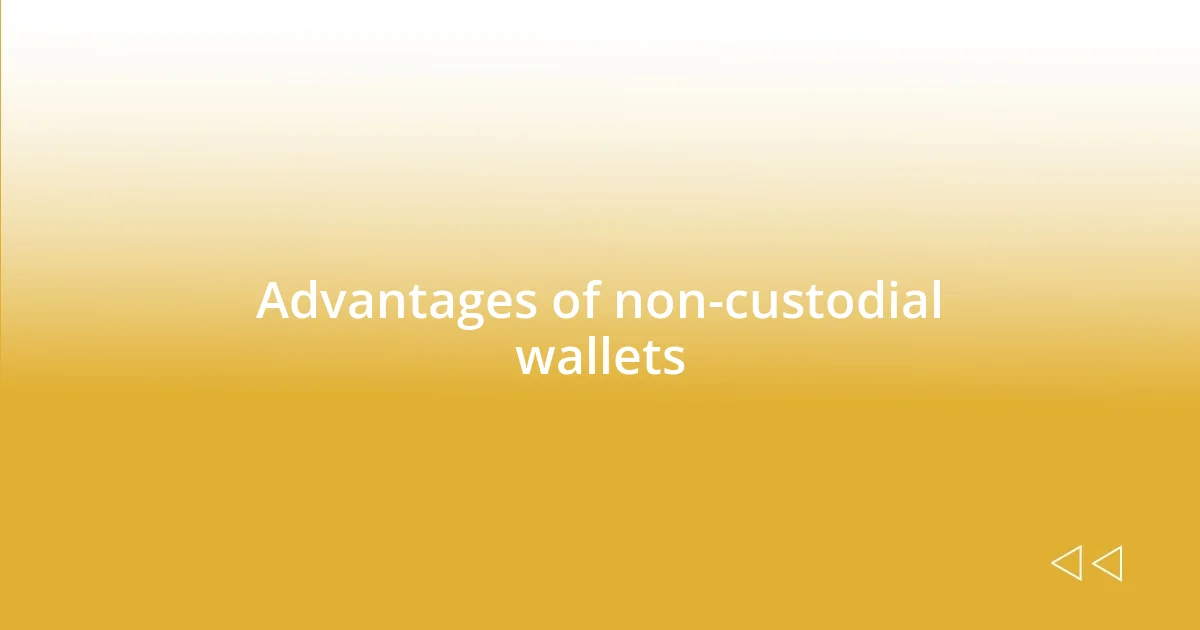
Advantages of non-custodial wallets
The primary advantage of non-custodial wallets is the unmatched sense of security they provide through true ownership of your assets. When I first shifted to a non-custodial wallet, it felt empowering to know that I was the only one with access to my private keys. It was like unshackling a weight from my shoulders, knowing that my financial freedom was entirely in my hands. Have you ever experienced that exhilarating rush of being in total control of your own wealth?
Another key benefit is the enhanced privacy that non-custodial wallets offer. Unlike custodial wallets, where your data might be shared with third parties, these wallets allow you to transact with a greater degree of anonymity. I recall the first time I made a transaction without any checkout forms or ID verifications; it was liberating! The idea that my financial actions were far less traceable was a refreshing change. Doesn’t it feel good to know you can navigate your financial life with more discretion?
Lastly, the adaptability of non-custodial wallets is remarkable. They often support a wide range of cryptocurrencies and tokens, allowing you to expand your digital portfolio effortlessly. When I first discovered this, it was like opening a treasure chest of opportunities. I could explore different projects without being tied down to a single ecosystem. The freedom to diversify my holdings with just a few clicks was thrilling—have you ever felt that rush knowing you’re just a decision away from expanding your investment horizon?










